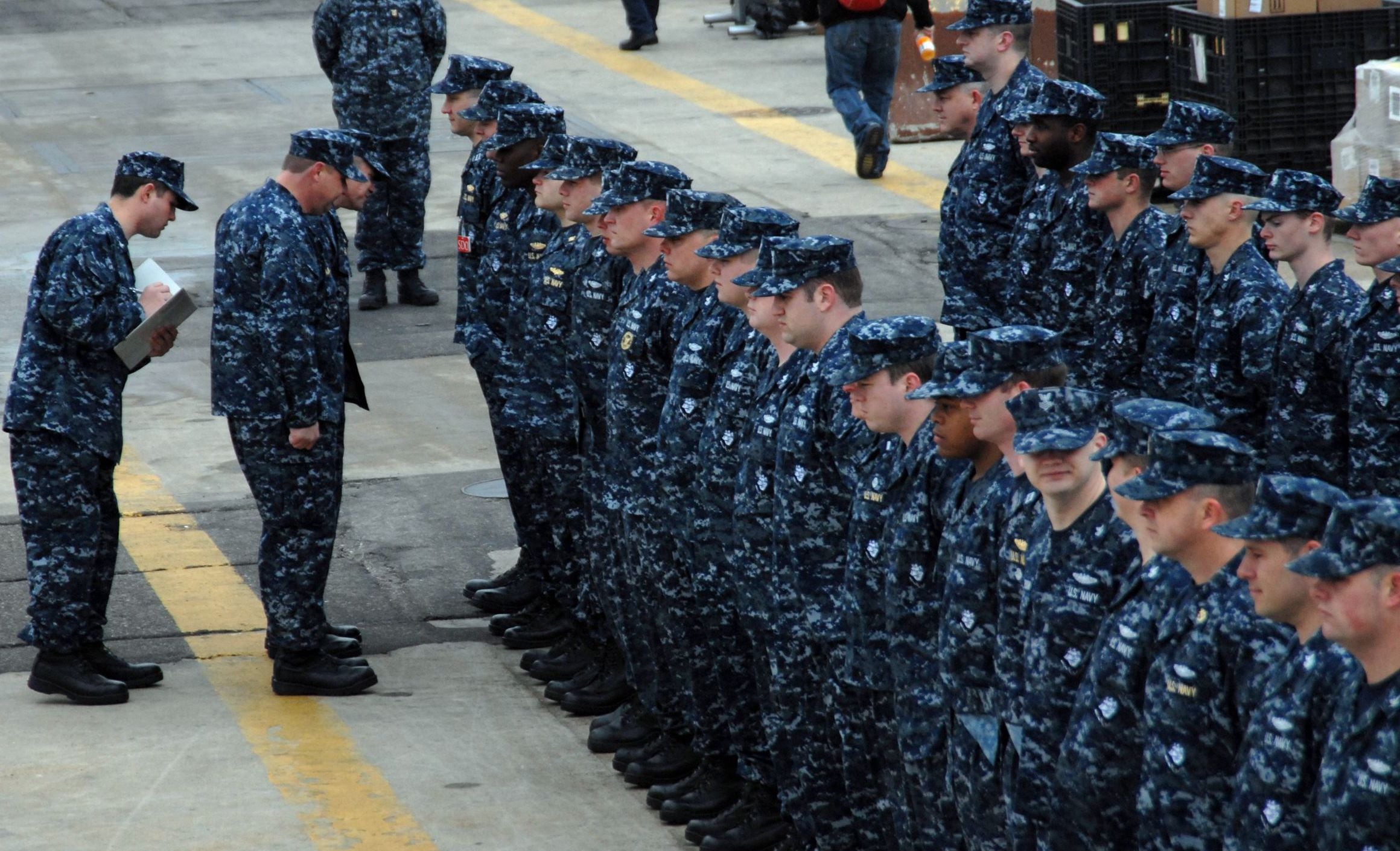“Necessity is the mother of invention,” the old proverb goes, and military men and women are no strangers to jury-rigging fixes on the fly.
And so it went when Lt. Mitchell Kempisty, who has served on several ships in recent years, saw a nametag problem that needed fixing.
Namely, the soft and bendy nametags were not standing up to shipboard life.
“They have a hook and loop Velcro that just attaches to the coveralls,” the 28-year-old junior officer said. “Over time, when the coveralls get washed or they get hung up or get rolled down to half-mast … they just get beat up over time.”
The nametags bunch and scrunch and curl at the corners, a decidedly “unsat” look, the Maryland native noted.
“They just look really bad,” he said. “People just walk around looking disheveled with that nametag. It’s the first thing you notice.”
“One day I just thought, there should be a backing to that to relieve the issue,” Kempisty added.
RELATED

And so was born “Industrial Reinforcement for a Wearable Identification,” Kempisty’s patented invention that keeps sailor nametags looking crisp and professional.
While his invention required some legwork, he said the basic concept is simple: a backing board attached to the back of the nametag that has its own Velcro to attach to the uniform, keeping the nametag straight and true in the process.
“The piece in the middle between the Velcro is carbon fiber nylon blend, which is very resilient, but also has good flexibility and rigidity,” he said, adding that it’s also fire retardant.
Kempisty, who graduated with an engineering degree from the U.S. Naval Academy in 2014, said it took nearly three years to move his idea from the lightbulb stage to prototype.
He bought a basic 3D printer, futzed around with it on his dining room table during his off time, learned Computer Assisted Design, or CAD, and then cranked out a prototype.
A childhood friend and patent attorney helped him legally lock the idea down and he’s since made connections with manufacturers to produce the item, which he is hoping to call “U-Guard.”
Kempisty said he wants to sell his invention at Navy Exchanges and give sailors their own chance to upgrade their nametag game.
Currently studying aeronautical engineering at the Naval Postgraduate School, Kempisty said he’s passed out prototypes to sailor buddies and has received solid feedback.
“To this day, some of them are still wearing it and they enjoy it,” he said. “Your patent doesn’t have to be cool or complicated, it just has to solve the problem.”
Geoff is the managing editor of Military Times, but he still loves writing stories. He covered Iraq and Afghanistan extensively and was a reporter at the Chicago Tribune. He welcomes any and all kinds of tips at geoffz@militarytimes.com.




